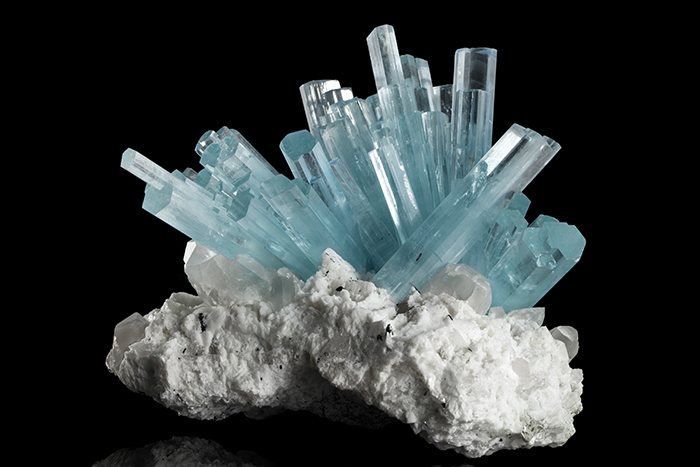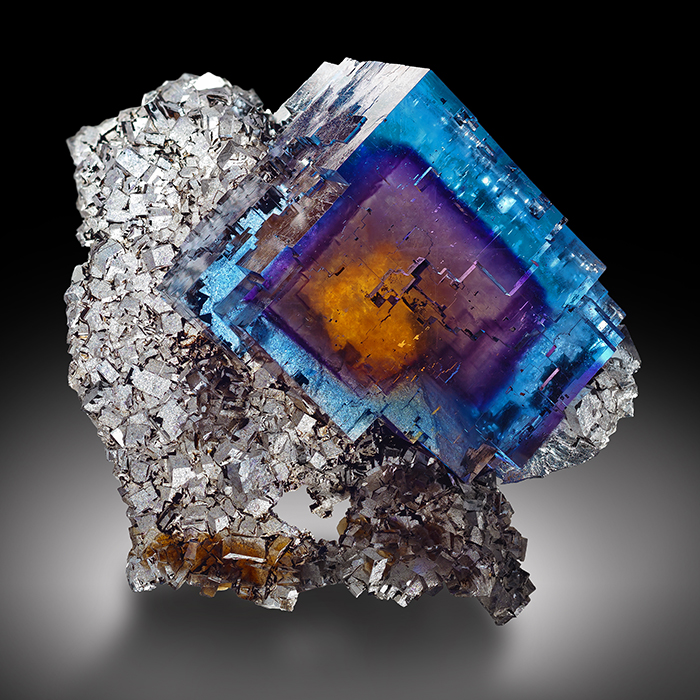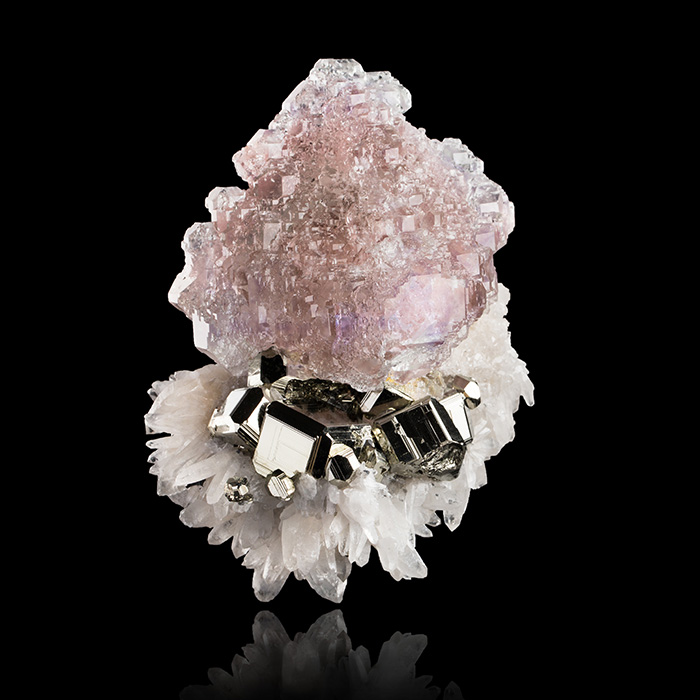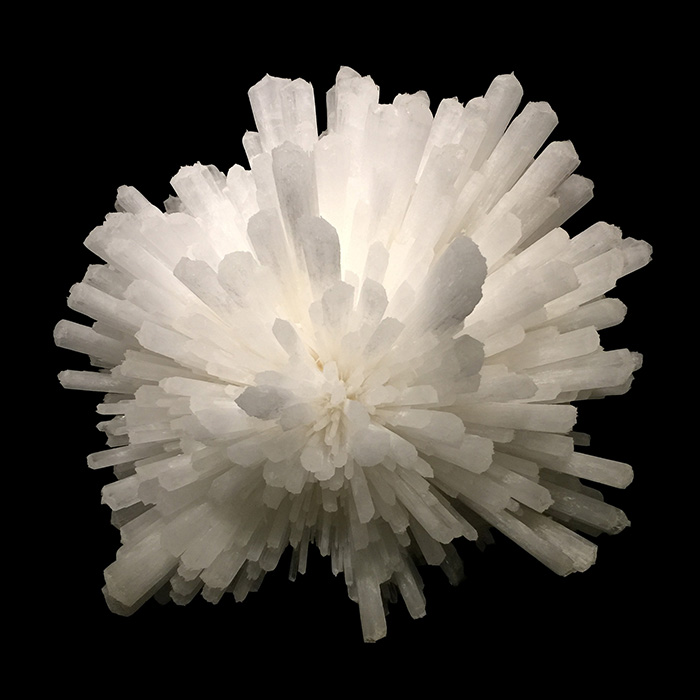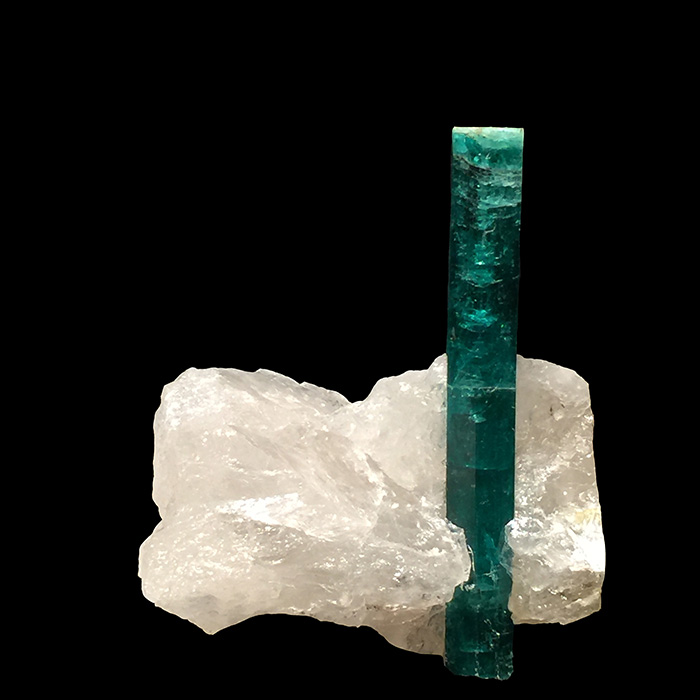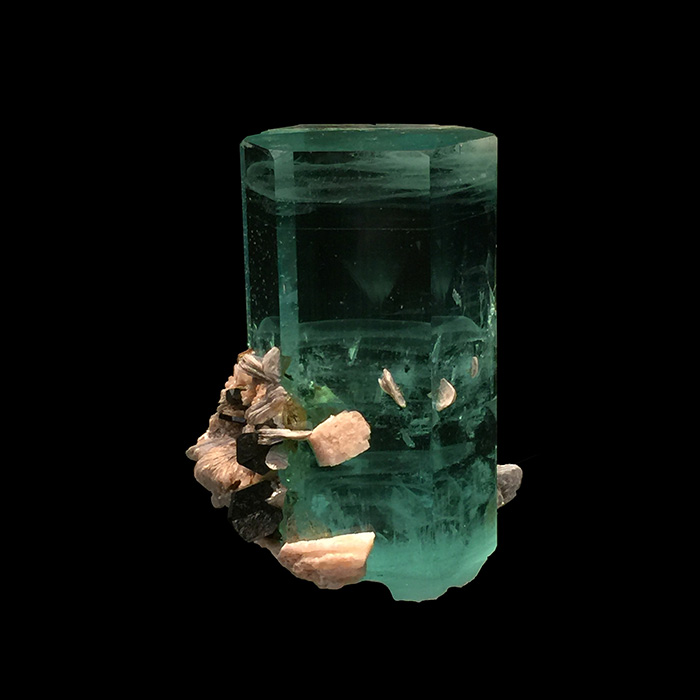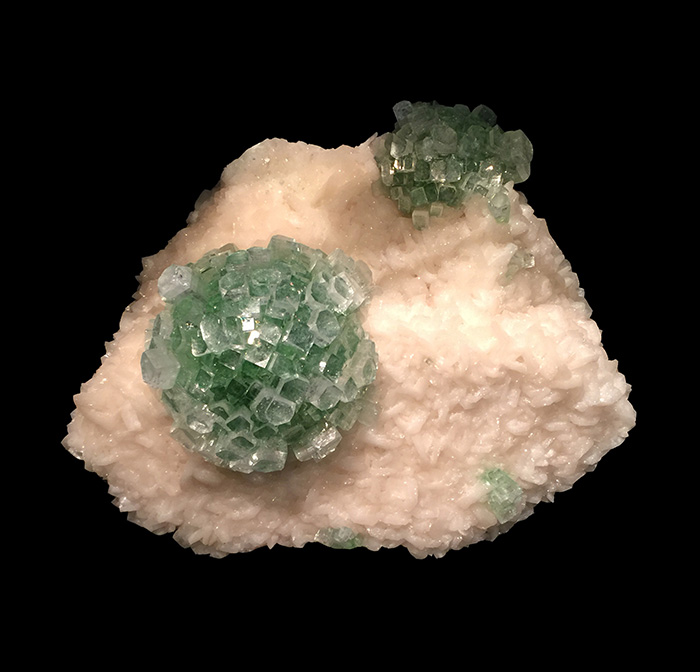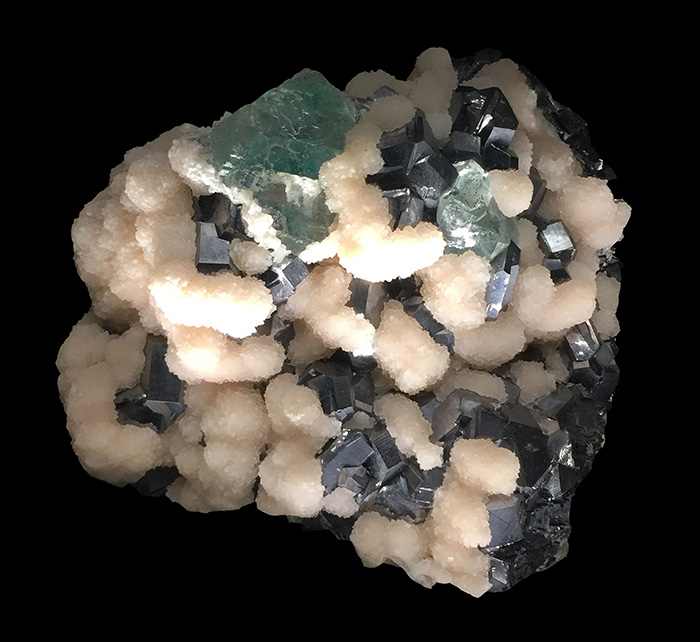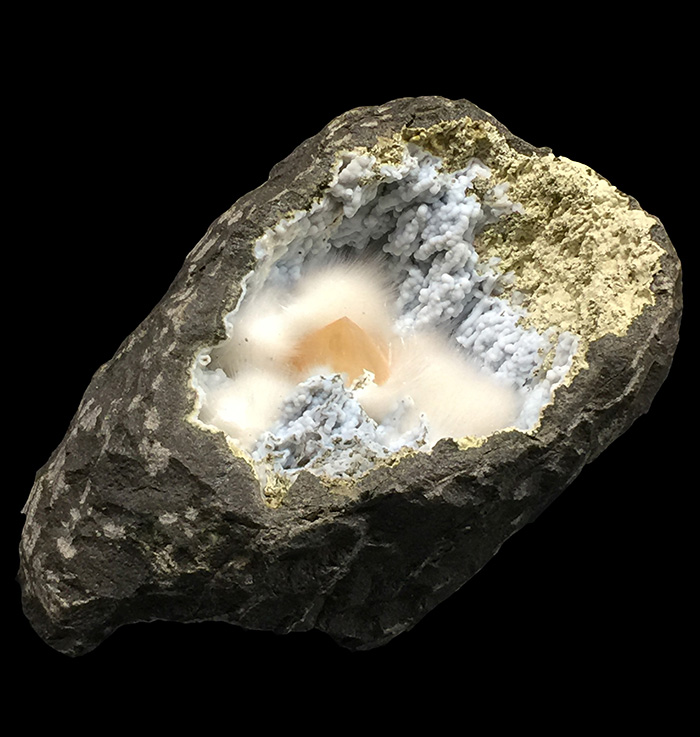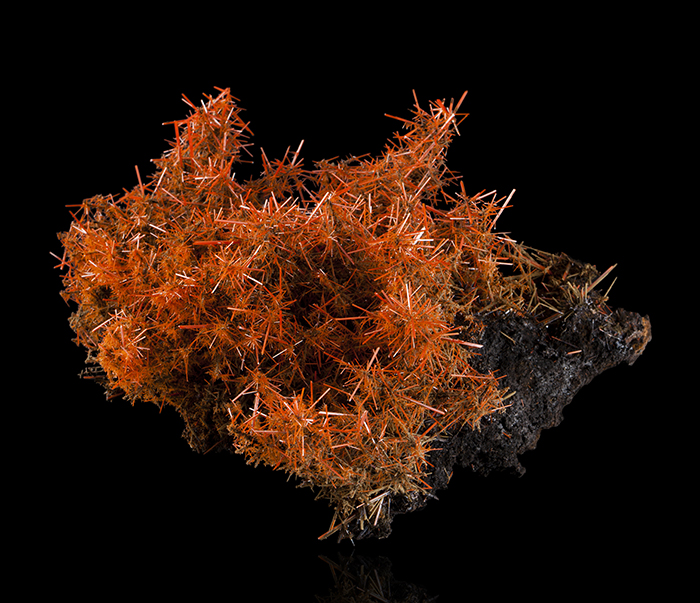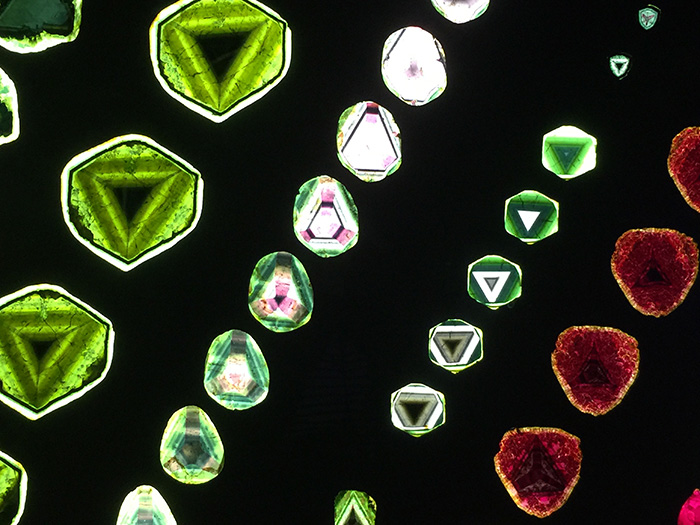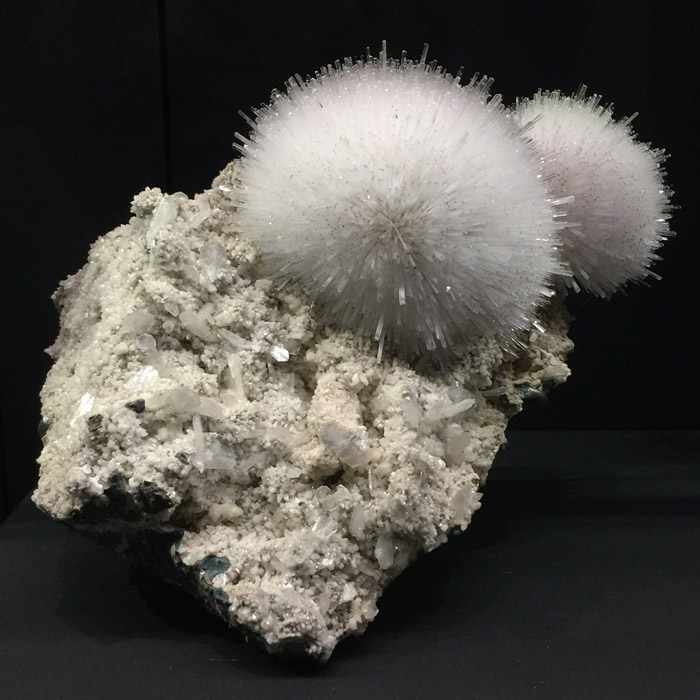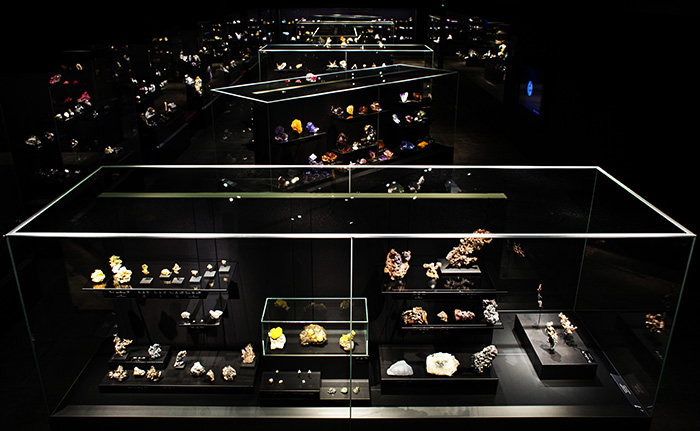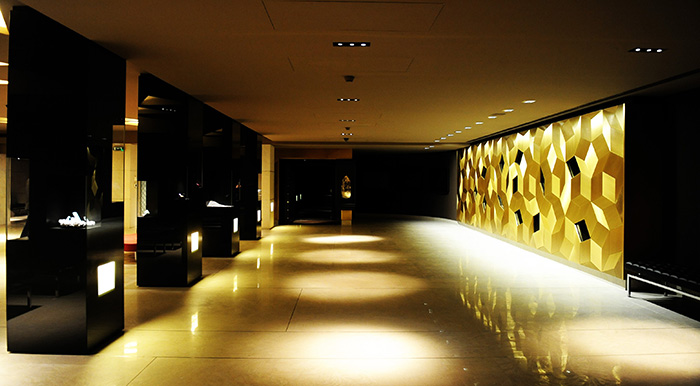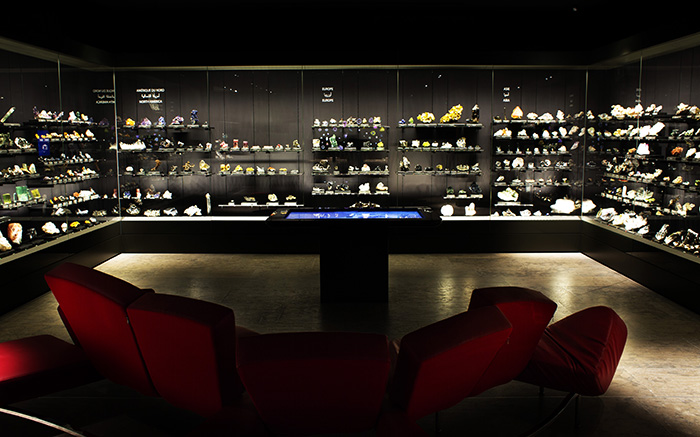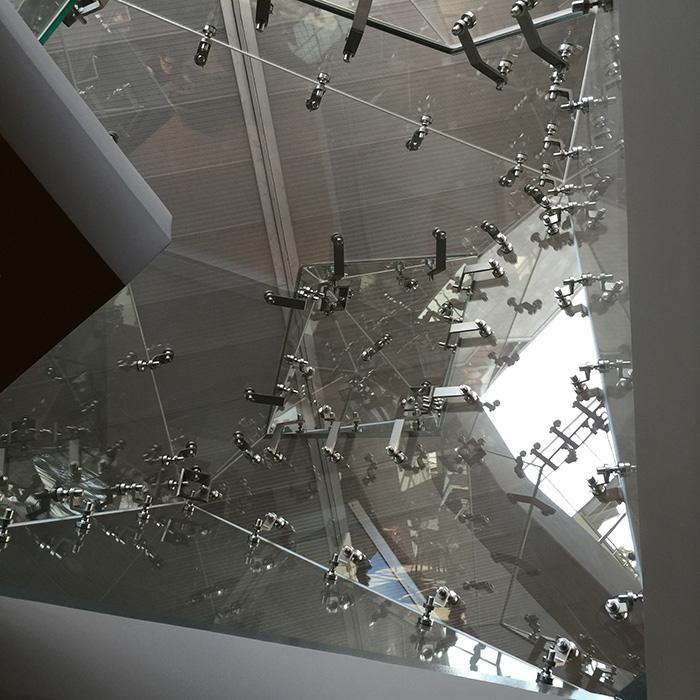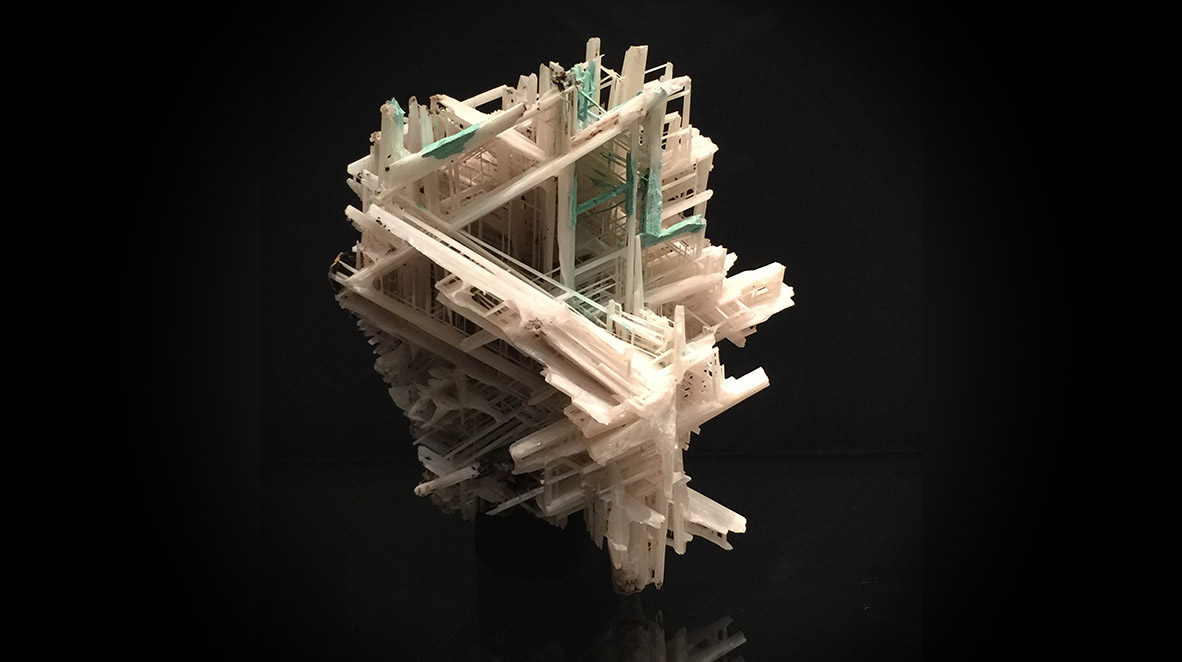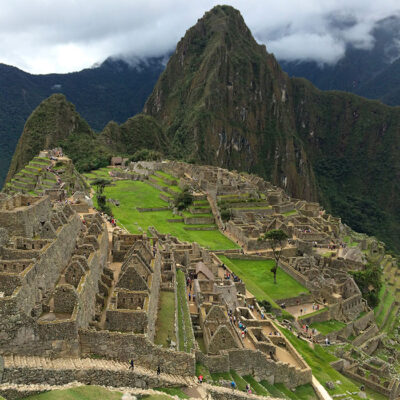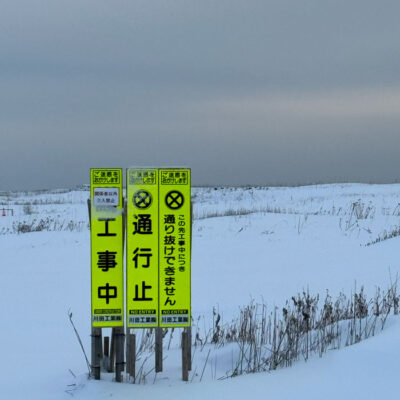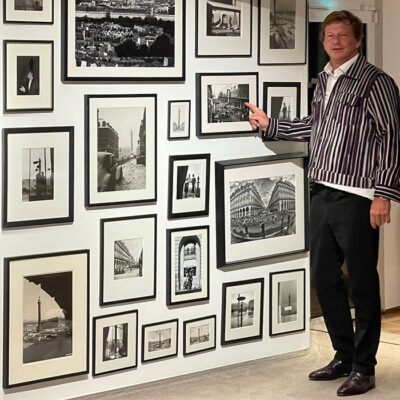Jewelers routes
08 January 2016
Share
Extraordinary minerals at MIM in Beirut
A privileged visit at the MIM, of one of the finest museums in the world, with its founder himself, Salim Eddé.
By Ludovic Leonelli.
Behind the security gate of the prestigious French university St. Joseph’s, a fabulous trip is about to begin in the MIM (first letter of the Arabic words museum, minerals and mining) at the centre of the earth. Our guide is not an adventurer but an elegant man to the letter that combines scientific rigor and aesthetic concern. Former student of Paris’ Polytechnic, a chemist and son of an art collector and numismatist father, Salim Eddé has the perfect background to entice novices to what generally interests only scientists: minerals.
At the MIM, a marvelous collection
Salim Eddé does not stumble once on any of the 150 names of 1,600 specimens exhibited, nor on their compositions or origins. He acquired this knowledge in just ten years; the time to built the most prodigious collection in the world. It is said, it represents nearly a third of his vast fortune coming from his Murex company (name of a Phoenician shell), a financial software company, which ranks him 194th among the wealthiest French. He is tireless on the technical construction of his 1,300-square meter museum, which is more like a museum of contemporary art than a traditional dusty natural science gallery. Upon entering, the tone is set with a huge golden faceted wall, preceded by five-smoked glass columns pierced with showcases revealing fabulous minerals. Cutting-edge technology is at the service of the most archaic of substances with tactile and interactive digital screens are highly present, like for the case of Mendeleev’s periodic table where it provides a detour into the mysteries of the chemical compositions and physical elements. A wall inlaid with 99 slices of Madagascar tourmaline is backlit unveiling its crystal structure.
The MIM, an aesthetic impact
In a dimmed corridor, 9 columns present the main mineral classes. The selection is simple: Salim Eddé chose the best examples of each category. You may think you have seen the most beautiful examples on entering the Alcove radiant with minerals, but then there’s the showcase of trophies, and finally the Treasure Room: gold crystals resembling twigs, stupefying macles and gypsum as if straight out of the earth’s bowels, an uncut diamond of 300 carats, crystallized gold nuggets, emeralds, rubies, sapphires, a staggering stibnite, an aquamarine like a fossilized block of water risen up from the depths, an Indian mordenite which seems to come alive before the eyes, specimens of a cottony softness, and others more akin to a vibrant and burgeoning matter are like landscapes or sculptures. The evidence is clear: you are in the most beautiful mineralogical museum in the world! Or rather, in one of the finest museums in the world. The aesthetic impact is comparable to what you may experience in front of the greatest works of art. The minerals that come from sixty countries, among them China, Peru, Colombia, Congo, are aesthetic explosions to your senses. It is an aesthetic dictatorship from which you cannot escape.
Never have minerals been so alive
Never has the idea of osmosis between plants and humans been so palpable. At the MIM, inevitably we think about life, death, the human body, the Cosmos and what Anglo-Saxons call “Intelligent Design”. Do we, with our cultural references, render the world more aesthetic or does this aesthetic dimension pre-exist us? An old question of beauty that haunts metaphysics. The emotion that grips the visitor is considerable. So much beauty in a city that has experienced and known so much suffering, so much hardship and so many hopes. Putting emotion before courage, Salim Eddé held fast so that the museum exists in his city and not in New York, London, Paris or Dubai. And it’s not the least paradoxical, that it’s here in this place that an agnostic visitor, sceptical of monotheistic religions, has felt, if only for a brief moment, the thrill, a shiver along the spine, a breath of God…
Written by Ludovic Leonelli (journalist and author of La Séduction Baudrillard published by l’École nationale supérieure des Beaux-Arts).
Related article:
The collection of the Mineralogy Museum of the Ecole des Mines


